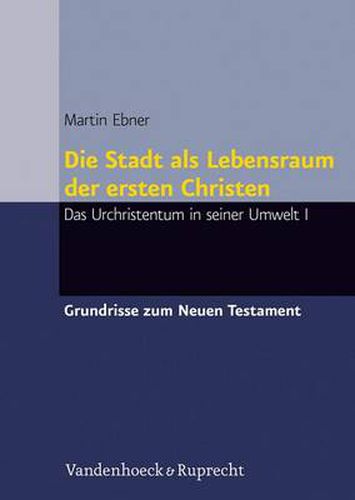Readings Newsletter
Become a Readings Member to make your shopping experience even easier.
Sign in or sign up for free!
You’re not far away from qualifying for FREE standard shipping within Australia
You’ve qualified for FREE standard shipping within Australia
The cart is loading…






This volume describes, in layman’s terms and yet against a well-founded scientific background, how early Christianity was transformed from a rural to a urban movement. The author describes the contours of what later became known as Christianity.This volume offers a broad description of the developmental history of early Christianity. It provides indepth information in easy-to-understand terms about how the originally rural movement called Christianity eventually became an urban entity. Particularly the environment of early Christianity and the social and religious structures as well as the architecture of the ancient city are described in detail. Ebner presents us with the temple and imperial cults of the time, life in the domestic household, and the role of the mystery cults along with the philosophy and important municipal mores of the day: oracles, healing cults, magic. Each chapter asks the question: How much did the Christians integrate existing structures and at what junctures did they modify them? Those junctures are the ones at which the outline of early Christianity becomes clearest.
$9.00 standard shipping within Australia
FREE standard shipping within Australia for orders over $100.00
Express & International shipping calculated at checkout
This volume describes, in layman’s terms and yet against a well-founded scientific background, how early Christianity was transformed from a rural to a urban movement. The author describes the contours of what later became known as Christianity.This volume offers a broad description of the developmental history of early Christianity. It provides indepth information in easy-to-understand terms about how the originally rural movement called Christianity eventually became an urban entity. Particularly the environment of early Christianity and the social and religious structures as well as the architecture of the ancient city are described in detail. Ebner presents us with the temple and imperial cults of the time, life in the domestic household, and the role of the mystery cults along with the philosophy and important municipal mores of the day: oracles, healing cults, magic. Each chapter asks the question: How much did the Christians integrate existing structures and at what junctures did they modify them? Those junctures are the ones at which the outline of early Christianity becomes clearest.